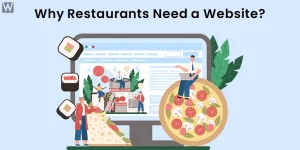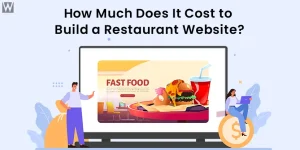9 Local SEO Tips for Restaurants to Maximize Foot Traffic
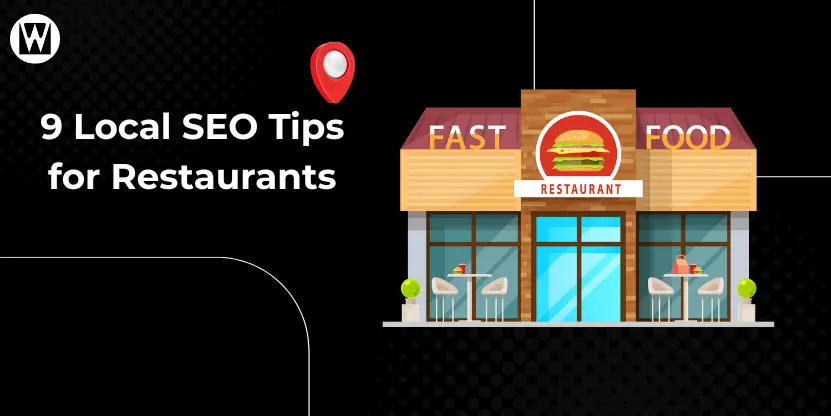
In today’s digital-first world, nearly 77% of diners check a restaurant’s website or online reviews before deciding where to eat. That means if your restaurant isn’t showing up in local search results, you’re likely missing out on a huge chunk of potential foot traffic. Whether you’re running a cozy café or a bustling bistro, showing up when someone searches “best tacos near me” or “Italian food in Chicago” can make all the difference.
That’s where local SEO comes in.
Local SEO for restaurants is the process of optimizing your online presence so your business appears in local search results when hungry customers are searching nearby. This includes claiming and updating your Google Business Profile, collecting positive reviews, using relevant keywords, and making sure your restaurant’s name, address, and phone number (NAP) are consistent across the web.
In simple terms, it helps your restaurant stand out on Google Maps, in “near me” searches, and other location-based results — ultimately bringing more diners through your door. Use this guide and these 7 simple tips to grow your restaurant with the help of expert Local SEO services and dominate your neighborhood search.
Why Local SEO Matters for Restaurants?
Local SEO isn’t just about being visible – it’s about being found by the right people at the right time. When done right, it can give your restaurant a competitive edge in your neighborhood and drive a steady stream of new customers. Here are the key benefits:
- Increased local visibility
- Higher foot traffic from nearby customers
- Better rankings in “near me” and map searches
- More positive online reviews and social proof
- Improved mobile search performance
- Boosted trust and credibility with new diners
- Cost-effective marketing with long-term ROI
- Enhanced customer engagement through accurate listings and updates
9 Local SEO Stretagies for Restaurants
Local SEO is one of the most powerful and cost-effective marketing strategies for restaurants today. These nine actionable tips will help your restaurant rank higher in local search results and bring more hungry customers through your door.
Claim and Optimize Your Google Business Profile
Your Google Business Profile (GBP) is your restaurant’s digital storefront. It often appears before your website in search results, making it crucial to keep this profile complete and updated.
Include your business name, address, phone number, website URL, hours of operation, and services (like dine-in, takeout, or delivery). Add high-quality images of your food, interior, menu, and team to make your listing more appealing.
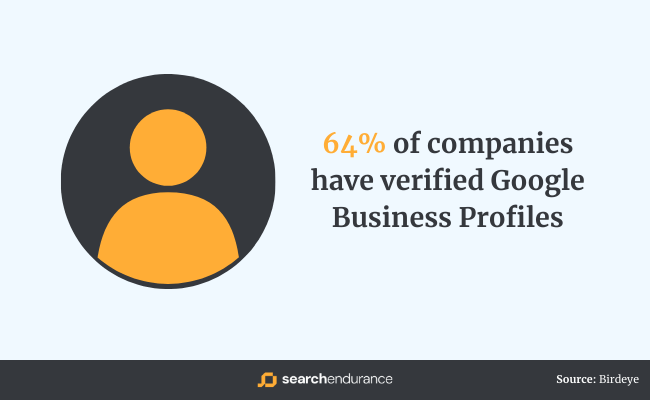
Source: Search Endurance
As per Google, businesses with complete GBP listings are 2.7x more likely to be considered reputable and receive 7x more clicks.
For instance, a pizza restaurant in Austin updated its GBP with 20+ photos, responded to every review, and added seasonal specials. Within 60 days, they saw a 32% increase in directions requests from Google Maps.
Use Location-Specific Keywords
When people search for restaurants, they often include a location, like “best sushi in San Diego” or “Italian restaurant near Times Square.” To show up in these results, your website content needs to reflect these terms. Incorporate location-based keywords naturally into your homepage, meta titles, headings, image alt texts, and blog content.
Near me” searches have increased by 500 %+ in recent years (Google), showing the growing importance of local intent.
Pro Tip: Don’t just write “We’re the best burger joint” — say “We’re the best burger joint in downtown Phoenix, serving handcrafted burgers and local brews.”
Ensure NAP Consistency Across All Listings
NAP stands for Name, Address, and Phone Number. Search engines use this data to verify that your business is legitimate and trustworthy. If your NAP information is inconsistent across platforms like Google, Yelp, TripAdvisor, Facebook, and your website, it can hurt your search rankings and confuse potential customers.
Regularly audit your listings with tools like Moz Local, Yext, or Whitespark to identify inconsistencies and fix them promptly.
Encourage and Respond to Customer Reviews
Reviews aren’t just for reputation—they’re a major ranking factor for local SEO. Google favors businesses with frequent, high-quality reviews, especially when they contain relevant keywords and locations. Actively ask happy diners to leave a review on Google and other platforms. Be sure to respond to both positive and negative reviews with a friendly, professional tone.
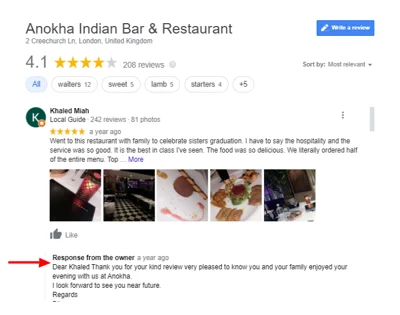
According to BrightLocal, more than 87% of consumers won’t consider a business with a low rating, and reviews can influence where Google ranks your restaurant.
For example, a Thai restaurant in Chicago implemented a post-meal email campaign encouraging reviews and increased their rating from 3.8 to 4.5 in six months—along with a 20% boost in new reservations.
Add Local Schema Markup to Your Website
Schema markup is a type of structured data that helps search engines better understand your website content. By adding local business schema to your site, you enhance your chances of appearing in rich results like local packs, review stars, and map listings.
Google uses structured data to generate features like star ratings, menu links, and operating hours right in the search results, making your listing more attractive and clickable.
You can use Google’s Structured Data Markup Helper to add this code to your website even without advanced coding skills.
Create Location-Specific Content
Creating hyper-local content not only improves SEO but also connects with your community. This could include blog posts about local events, seasonal menu items, collaborations with nearby businesses, or food trends in your area.
For instance, a brunch café in Portland published blog posts like “5 Farm-to-Table Restaurants in East Portland” and “How We Source Local Coffee,” which attracted backlinks from local blogs and ranked on Google for several local keywords.
Make Your Website Mobile-Friendly
Since most customers use smartphones to search for food on the go, your restaurant website must be optimized for mobile. This means fast loading times, responsive design, clear navigation, and click-to-call or click-for-directions buttons.
Over 60% of food-related searches come from mobile devices (Google), and 53% of users will leave a site if it takes more than 3 seconds to load.
Use web design testing tools like Google’s Mobile-Friendly Test and PageSpeed Insights to diagnose and improve your site’s performance.
Leverage Social Media for Local Engagement
Social media doesn’t directly impact search rankings, but it plays a huge role in building local brand awareness and customer engagement. Share behind-the-scenes photos, promotions, user-generated content, and tag your location. Respond to comments and DMs to build community and loyalty.
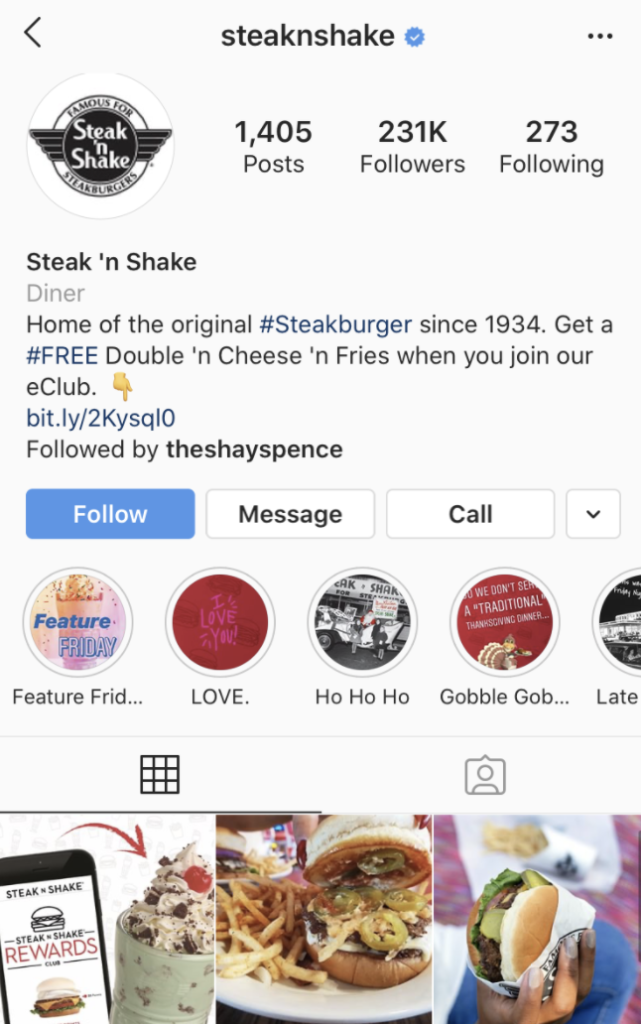
According to Sprout Social, posts with tagged locations on Instagram receive 79% more engagement, which can translate to more visits and shares.
Use local hashtags like #ChicagoEats or #NYCFoodie and tag local influencers or events to extend your reach.
List Your Restaurant on Relevant Local Directories
Your restaurant should be listed on all major directories like
- Yelp
- TripAdvisor
- OpenTable
- Zomato
- And Apple Maps
These listings help search engines verify your business and generate backlinks, which are key ranking factors.
Focus on quality over quantity. A few high-authority, relevant listings are more valuable than dozens of low-quality ones.
Local SEO Tips Straight from Industry Leaders to Your Kitchen
Find out how the best in the restaurant business use local SEO to drive results — with actionable insights from marketers and industry leaders.
How can I get my restaurant to appear on Google Maps?
Danny Meyer (Union Square Hospitality Group): Start by verifying your Google Business Profile and ensuring your NAP details are 100% accurate.
How do I rank my restaurant higher in local search results?
Andrew Zimmern (chef & media personality): Consistency, reviews, and relevant local content—Google loves fresh, hyper-local updates.
What are the best local SEO strategies for restaurants in 2025?
Neil Patel (Digital Marketer): Mobile-first websites, voice search optimization, and a strong review strategy are crucial this year.
How can reviews help my restaurant’s SEO?
Joy Hawkins (Local SEO expert): Google uses review quantity and keywords as trust signals—it’s one of the top local ranking factors.
What’s the best way to get local backlinks for my restaurant website?
Rand Fishkin (SparkToro): Partner with local bloggers, sponsor community events, and get listed in city-specific food guides.
How can I optimize my restaurant’s menu for local SEO?
Mike Blumenthal (Local SEO authority): Add keyword-rich dish descriptions and include the city name in the HTML text, not just images.
Does having separate location pages help multi-location restaurants rank better locally?
Greg Gifford (SearchLab): Absolutely—unique pages with location-specific content and reviews are key to ranking in multiple cities.
How does schema markup improve local SEO for restaurants?
Marie Haynes (SEO consultant): Schema helps Google understand your restaurant better—use it to highlight menus, hours, and reviews.
Should I run local SEO differently for a food truck vs a restaurant?
Ben Fisher (Local SEO expert): Yes—food trucks should prioritize mobile updates, event pages, and flexible location listings on maps.
How do I use local SEO to attract tourists or out-of-town visitors to my restaurant?
Ann Handley (MarketingProfs): Create visitor-friendly content like ‘Where to Eat Near [Landmark]’ and optimize for travel keywords.
Can I use social media check-ins and geotags to boost my local SEO?
Gary Vaynerchuk (Entrepreneur & marketer): Yes—location tags are mini signals to Google, and they drive social proof at the same time.
How do voice searches like “best Italian restaurant near me” impact local SEO?
Brian Dean (Backlinko): Voice searches favor fast-loading, mobile-friendly pages with conversational, locally-relevant keywords.
What are the local SEO benefits of listing my restaurant on delivery platforms like Uber Eats or DoorDash?
Moz SEO Team: They create trusted backlinks and citations that boost your authority and visibility in local search results.
Fire Up Your Local Reach and Fill More Tables
If you want more people walking through your doors, local SEO isn’t optional—it’s essential. By applying the tips above, you’ll boost your visibility, connect with nearby diners, and stay ahead of the competition in your area.
Don’t have time to manage all this yourself? Partner with a trusted SEO agency like WebyKing, and let the experts handle the strategy while you focus on what you do best—serving great food and creating memorable dining experiences.

Ravi Makhija, the visionary Founder and CEO of WebyKing, is a seasoned digital marketing strategist and web technology expert with over a decade of experience. Under his leadership, WebyKing has evolved into a premier full service web and marketing agency, delivering innovative solutions that drive online success. Ravi’s deep understanding of the digital landscape combined with his passion for cutting-edge technologies empowers him to consistently exceed client expectations and deliver results that matter.

